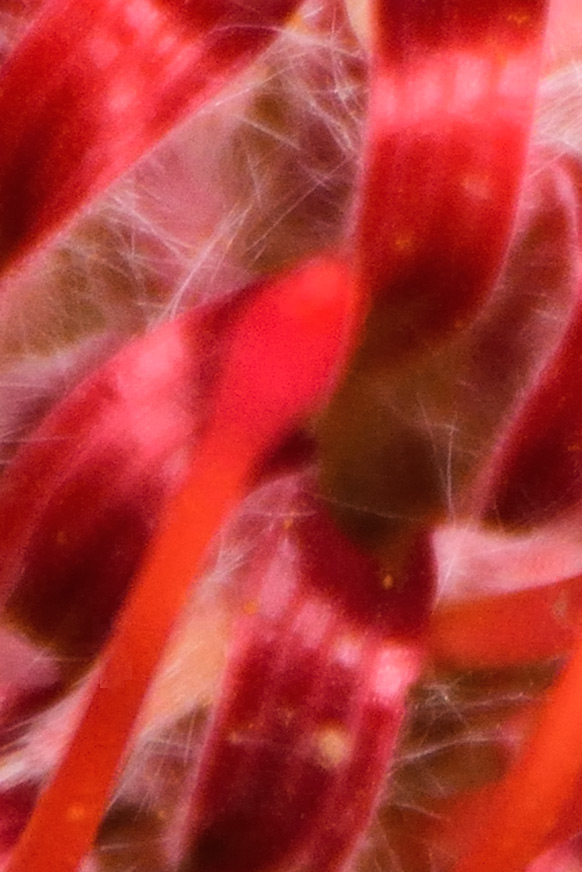Is there anything I can do at either the stage of taking the initial shots or additional tweaks I could do in Photoshop to improve my focus stacking results?
I am finding that the 'rear' of the stack is forming quite well; the correct areas are being chosen to use the sharpest point. However, the front-most layer seems to not be receiving sufficient attention.
This is a very small crop from a photograph of a flower I took at 4 focus points [though only 3 are relevant to this segment] The crop centres on one 'petal' from the very front of the flower.
This is Photoshop's stacked result...
Right click any image & 'open in new tab' for full sizes

It is made from these three layers...



As you can see, photoshop seems to have favoured the middle & rear layers rather than bringing this front petal in as sharp as possible from the available material.
Is there anything I can do to influence Photoshop's decision as to which areas to favour at any given depth? I'm aware I could go back through the masks by hand & change the end result; but that seems a lot of work for a process that in auto-mode takes mere seconds.
I've tried changing the order of the layers before stacking, front to back/back to front, but this seems to have little effect.
Alternatively, is there anything I can do at the photography stage to let photoshop favour the 'front' more - perhaps one more layer with the focus pulled even closer? I haven't had chance to investigate that possibility yet.
Equipment used:-
Nikon D5500 Nikkor AF-S 24-120mm 3.5-5.6 @120mm ISO 400 1/125s f5.6
Full manual mode. AF & VR off.
Full-size, VLQ jpg of the whole stacked frame, marked with the approximate crop



